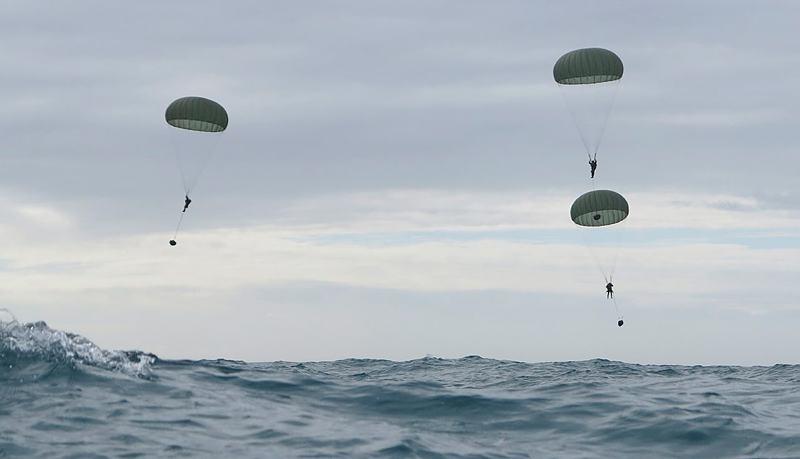The rise of ISIS allied with the seemingly inevitable mass migration caused by climate change is confronting Australia’s military and intelligence leaders with a devilish conundrum. No one yet has a plan to meet the approaching tumult but one thing is certain: in solving the dilemma the role of our Special Forces will be increasingly central to our future defence and security.
These conclusions were borne upon me during the two years of research and writing that produced my Warrior Elite, the history of our Special Forces incorporating our intelligence agencies just published by Hachette. It involved scores of interviews with the planners behind the political scenes who develop our defence policy.
In the last two decades the military and the intelligence agencies have coalesced into a Special Forces cohort unlike anything that preceded it. And it incorporates an ever increasing proportion of our defence preparedness. The planners know that the technological genie is out of the bottle. Today, an SAS squadron, for example, has at its command a firepower exceeding a WWII battalion. An extraordinary research effort in 47 military and civilian facilities in the US and others in Europe, Japan and China is producing an astonishing array of protective battle suits, advanced weaponry, communications, telemetry and real time HQ support and direction. These are either in use now or on the verge of deployment to the Special Forces of most advanced countries, Australia included. They are the instruments of a radical transformation of military strategy and tactics.
As our Commando regiment increases its battlefield capacity, the SAS in close cooperation with ASIS is expanding its capabilities in potential trouble spots in the region, the Middle East and even the African continent. But here the planners run up against a strategic quandary. Both units are closely affiliated with the US. And while this brings substantial technical advantages, in the bigger picture these are offset by strategic liabilities which defence leaders realise they must overcome.
America’s imperial superpower assertions have created serious complications in Australia’s relations with China and arguably affected the development of open-hearted, neighbourly relations with the largely Muslim nations of Indonesia and Malaysia. Both Indonesia and China are themselves deeply vulnerable to ISIS—Indonesia through its 95% Muslim population and corrupt governance; China because of its 160 million Muslims and their alienation from an unyielding single-party government. Both countries are facing much bigger problems than Australia in controlling their internal threat.
Indeed, were it not for Australia’s enthusiastic embrace of the Five-Eyes alliance which has traditionally been directed against China and Indonesia, among others, it would be perfectly possible to envisage a regional arrangement encompassing Australia and its two most populous neighbours in a cooperative Special Operations counterforce to the jihadists.
Then comes the second strand of the conundrum: climate change. Heavy Weather, an ASPI Special Report published in March 2013, warned that global warming:
‘has generated little interest in either the ADF or the Defence Department, [yet] climate change is transforming the conventional roles of security forces. As a threat multiplier, it has the potential to generate and exacerbate destabilising conditions that could reshape the regional security environment.’
That now seems inevitable. And the planners are aware that our response must involve international alliances with the great forces who would underwrite—with force if necessary—the right of nations like Australia to decide (in John Howard’s immortal phrase) ‘who comes to this country and the circumstances in which they come’.
When climate change produces uncontrolled mass migration—the forerunner of which we now see in the Mediterranean—the support and cooperation of regional governments, particularly Indonesia and China, will be essential to any Australian effort to retain its territorial integrity. Yet once again our ‘Five-Eyes’ alliance with the Anglosphere which targets Indonesia and China as potential threats stands as an impediment to the development of the cooperation and support required.
While the American alliance will no doubt remain in place, it may well be that Australia needs to loosen the ties to its Anglophile past before a genuine regional integration can be secured. An innovative 2014 ASPI/ADF study might well point the way to the future. It proposes the posting of Special Forces liaison officers in Indonesia, Malaysia, Singapore and the Philippines ‘of which Indonesia is the most important’. It recommends increased Special Forces engagement with Southeast Asian nations leading to the establishment of a Special Forces Regional Training Centre in Australia. And in a ground-breaking proposal, it advocates an ‘intensification’ of cooperation with Chinese Special Forces. ‘This would be a confidence-building exercise,’ it says, and would develop through joint humanitarian and military exercises.
In this rearrangement of forces, as our Special Forces add a diplomatic cutting edge to their arsenal, we might well find that our future security—in Paul Keating’s words—is ‘in Asia’ and not ‘from Asia.’
